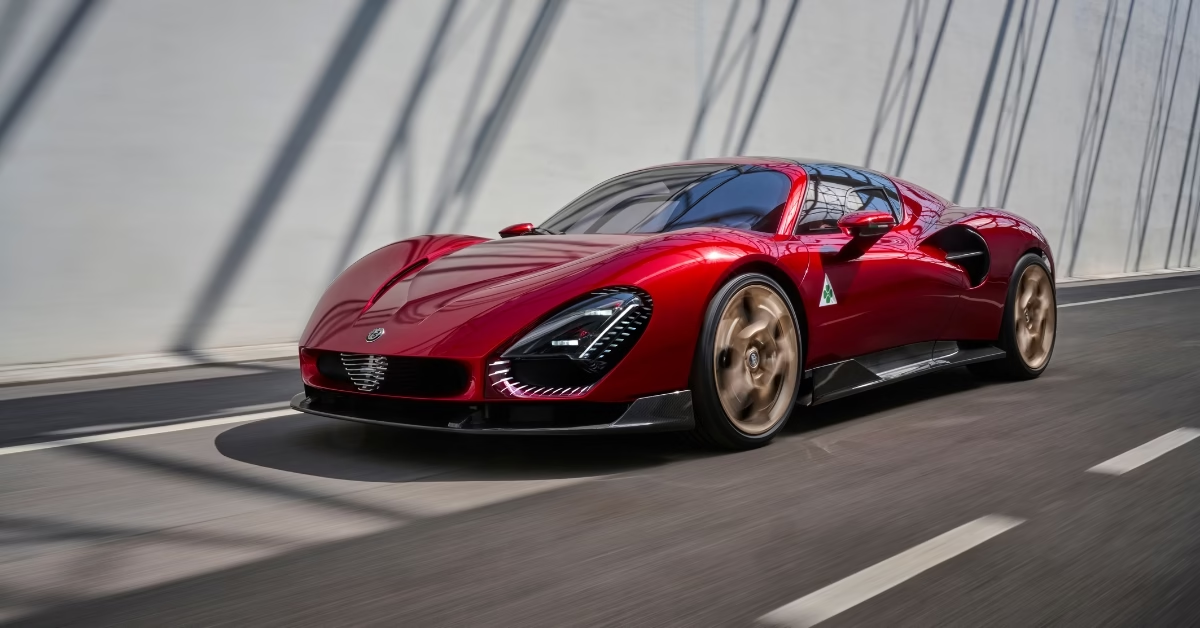The Alfa Romeo 33 Stradale is more than just a limited-production supercar. It is a rolling sculpture, a tribute to one of the most beautiful cars ever made, now reimagined for the modern era.
Handbuilt with the care of a vintage classic and powered by state-of-the-art engineering, this modern 33 Stradale celebrates both heritage and innovation. Below are seven exceptional design details that make this car one of the most exclusive and visually striking vehicles in the world.
1. Butterfly Doors That Flow Into the Bodywork
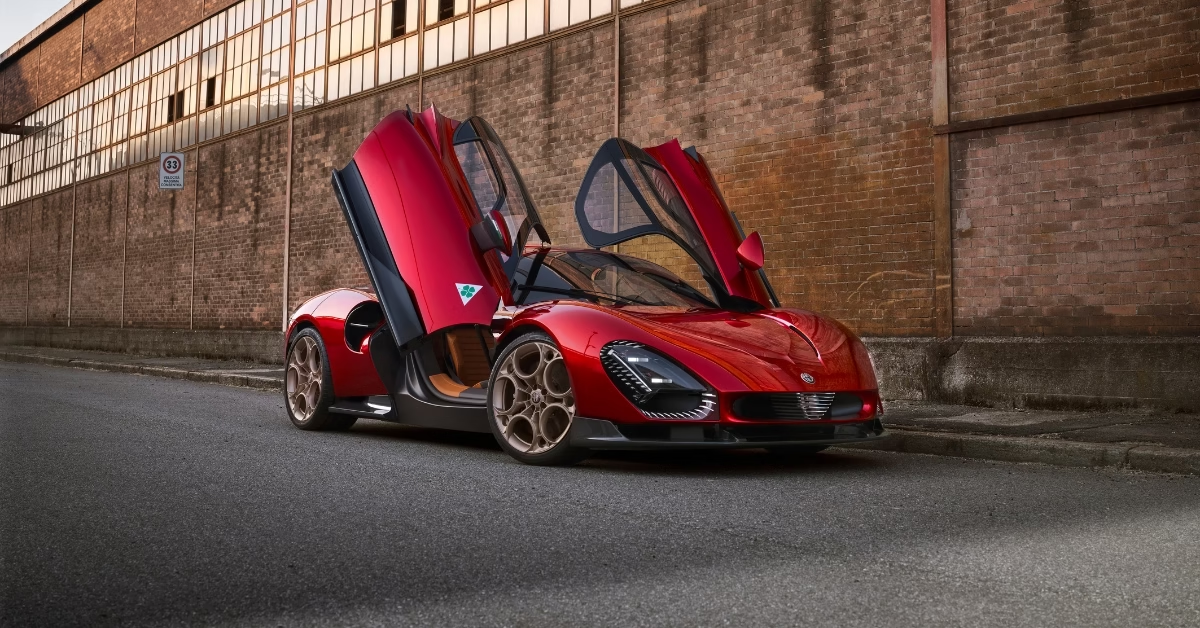
Aesthetically dramatic and functionally seamless, the butterfly doors of the Alfa Romeo 33 Stradale are among its most striking features. These doors don’t just swing upward—they appear to continue the car’s curves in motion. Integrating the fender lines and top curvature into the door panel creates a flowing, organic look that echoes the original 1967 model while pushing modern boundaries.
Their function goes beyond beauty. The wide opening aids ingress and egress, particularly in tight European streets or low-slung parking environments. It’s an homage to racing cars of the past while offering real-world usability. The door hinges are engineered to handle repeated use while maintaining perfect alignment with the body lines—crucial for a vehicle so meticulously crafted. And because each panel is custom-fit to the hand-built frame, the door edges align seamlessly with surrounding surfaces for a truly sculptural finish.
2. Teardrop Glass Canopy
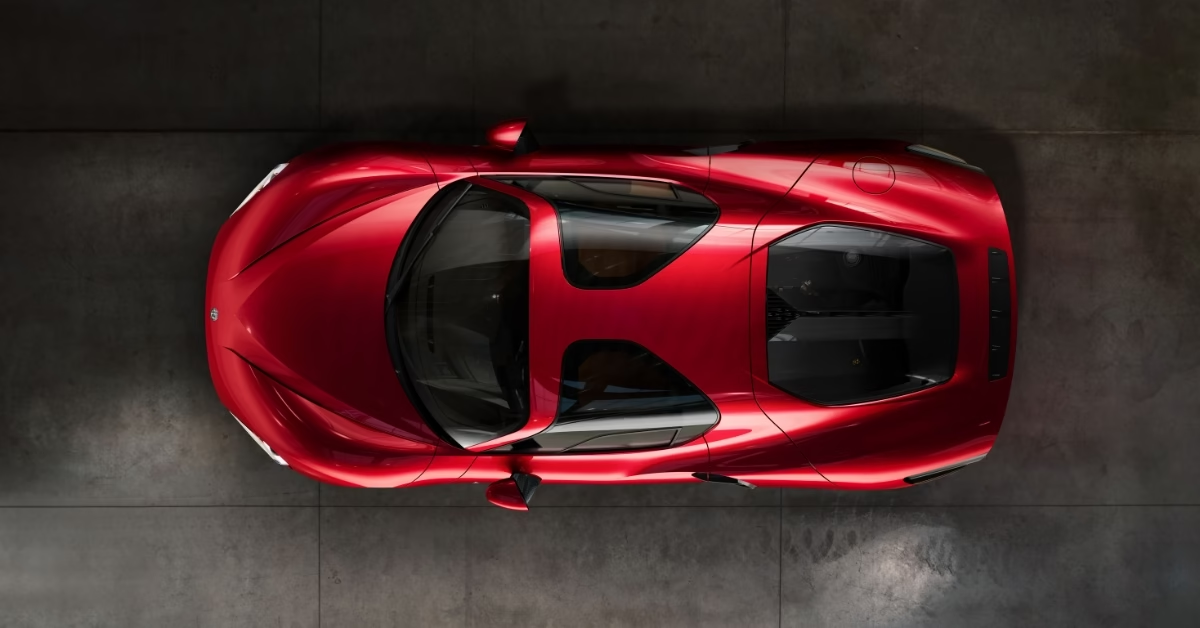
A defining visual feature, the teardrop-shaped glass canopy envelops the cabin in a continuous arc. This design element stems directly from the 1967 original, offering panoramic visibility and enhancing the car’s aerodynamic profile. The shape merges windshield, side glass, and roofline into a single visual statement.
It’s both beautiful and functional: not only does it create a cockpit-like appearance, but it also reduces drag and increases downforce. When viewed from above, the teardrop form showcases Alfa’s obsession with symmetry and proportion. The canopy uses specially treated glass for UV protection and thermal insulation, making long drives more comfortable. It also enhances structural rigidity by eliminating breaks between traditional A- and B-pillars, adding to the car’s overall torsional strength.
Suggested:
3. Custom Carbon Fiber and Aluminum Chassis
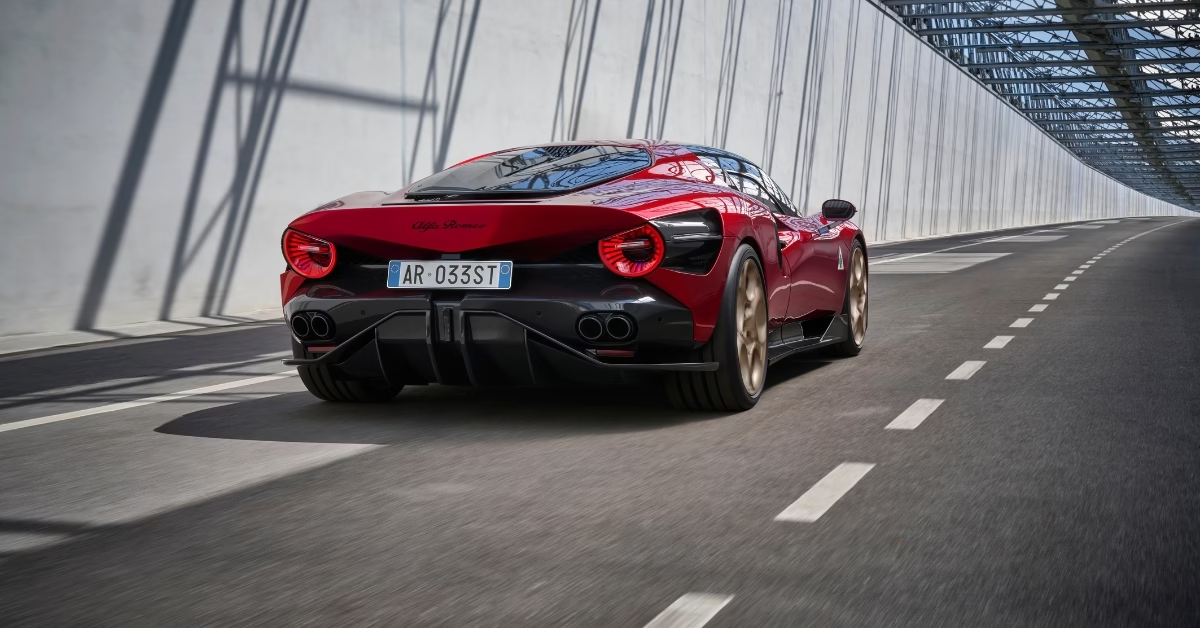
Beneath its graceful curves lies a chassis designed for both rigidity and lightness. Built on a carbon fiber monocoque with aluminum front and rear subframes, the Alfa Romeo 33 Stradale ensures high torsional stiffness without adding weight.
This combination gives the designers freedom to sculpt dramatic body lines without compromising structural integrity. It also helps the car achieve its blistering performance: 0 to 100 km/h in under 3 seconds and a top speed of around 333 km/h.
The car shares its core architecture with the Maserati MC20, but Alfa Romeo made sure the design language and finish are unique to their brand. Extensive use of aerospace-grade materials and proprietary bonding techniques contribute to the car’s exceptional handling and crash safety standards. Engineers also tuned the chassis for road use, blending track-level dynamics with grand tourer refinement.
4. Rear Light Signature Inspired by the Past
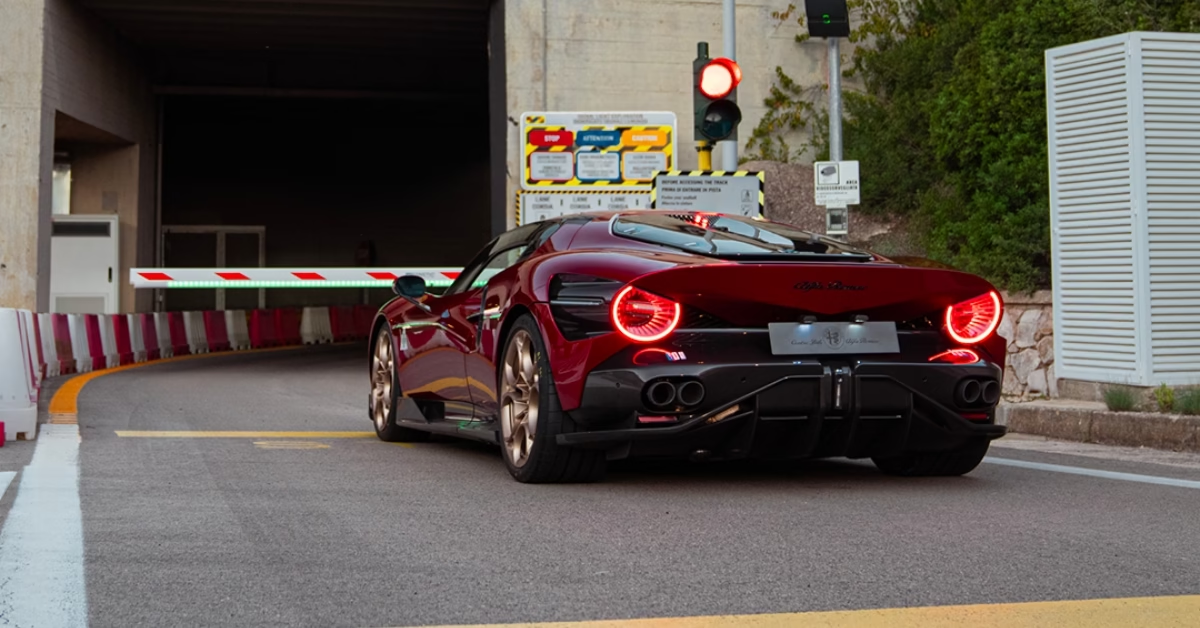
Twin circular LED taillights pay homage to the original Alfa Romeo 33 Stradale’s rear design. Housed in sculpted fenders and recessed into the body, they flank large heat extractors that manage airflow from the mid-mounted engine.
Beneath the lights, a large functional diffuser enhances rear-end grip while adding a motorsport-inspired finishing touch. It’s not all form: every surface contributes to the car’s balance between drag and downforce. The taillights themselves feature concentric ring animations during start-up and braking, combining nostalgia with a modern lighting signature. The surrounding elements also include integrated air vents and sculpted channels to direct turbulence away from the rear wheels.
5. Handcrafted Interior with Analog Touches
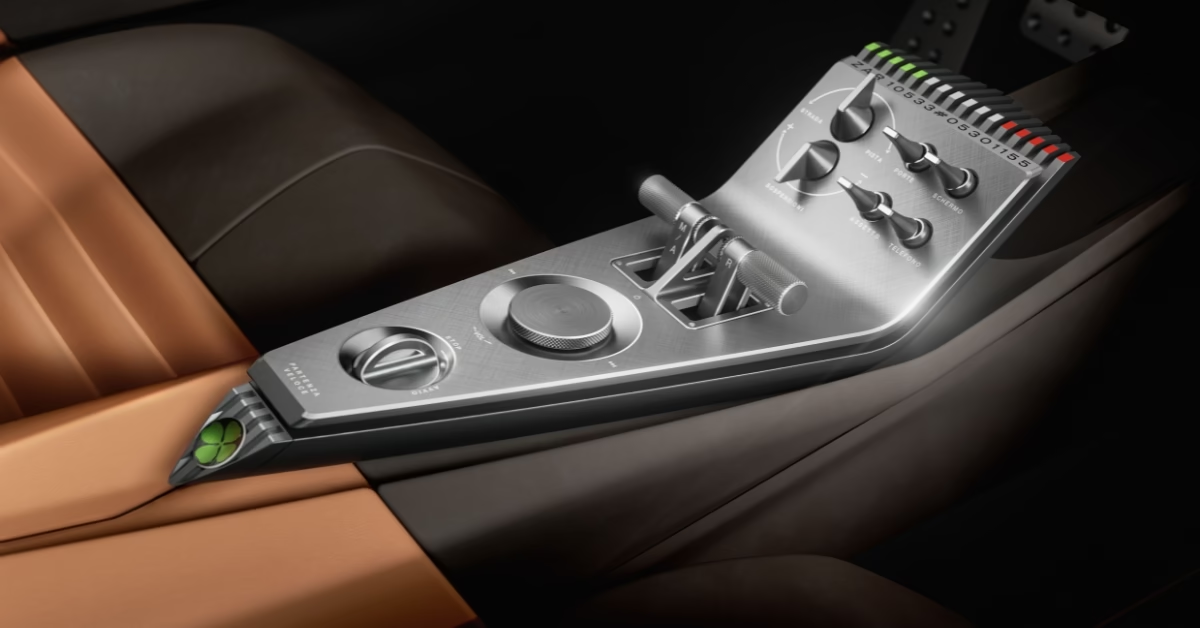
Inside, Alfa Romeo has rejected the trend of touchscreens and digital interfaces. Instead, the 33 Stradale boasts an analog dashboard that’s both minimalist and tactile. Expect billet aluminum toggle switches, a three-spoke steering wheel without buttons, and aviation-style gauges.
Buyers choose between two interior specs: Tributo, with classic heritage elements and warm leather tones; or Alfa Corse, a sportier, motorsport-inspired setup with carbon fiber and Alcantara. Each of the 33 cars is built to the buyer’s specifications.
The craftsmanship is second to none—leathers are sourced from premium Italian tanneries, and even the stitching pattern can be tailored. Every knob and dial is made of solid metal or carbon, giving a weighty, mechanical feel. This level of attention turns every drive into an immersive, tactile experience that few modern cars can replicate.
6. Two Faces: EV or Twin-Turbo V6
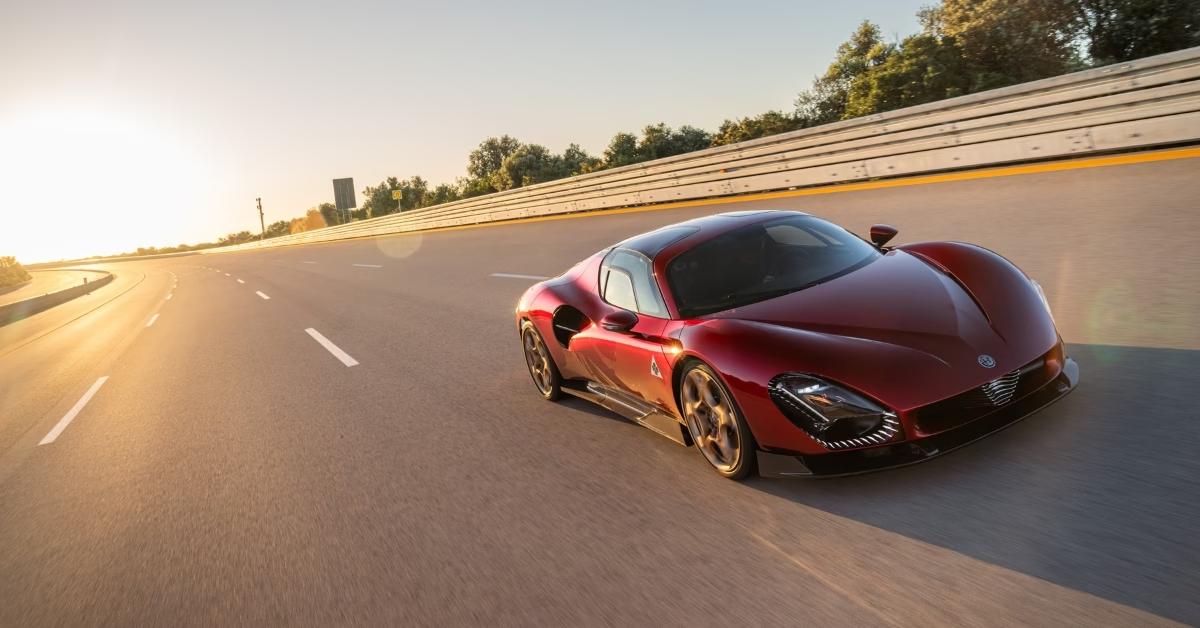
In a bold move, Alfa Romeo offers the 33 Stradale in two powertrain configurations: fully electric or internal combustion. The latter houses a 3.0-liter twin-turbocharged V6 producing over 620 hp, derived from the Maserati MC20.
The EV variant promises similar performance, delivering over 750 hp and a range of approximately 450 km. Both options use the same chassis and exterior, making the choice a matter of driving style and sustainability goals.
This approach makes the Alfa Romeo 33 Stradale a rare bridge between past and future—offering tradition and innovation in a single masterpiece. The V6 variant uses a dual-clutch transmission and active suspension for razor-sharp control, while the EV employs torque vectoring for instant power distribution. The fact that Alfa lets owners choose their driving philosophy in a coachbuilt supercar speaks volumes about their confidence in both platforms.
Suggested:
7. Every Unit is Bespoke and Coachbuilt
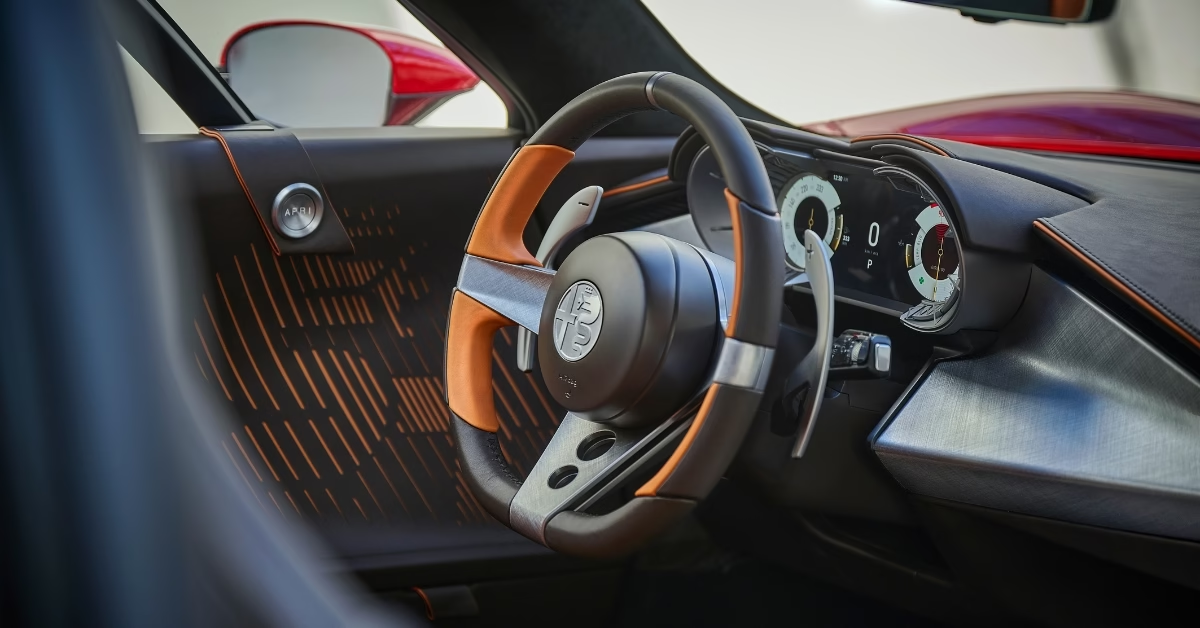
Only 33 units will ever be produced, each assembled by hand at Carrozzeria Touring Superleggera. Every owner is involved in the design process from the outset, choosing color, trim, interior layout, and even the tone of engine sounds (for EV models).
This coachbuilt process is a nod to an era when cars were art forms shaped by craftsmen. Today, it’s a privilege reserved for the ultra-wealthy few—but one that echoes through every stitch and curve of the Alfa Romeo 33 Stradale.
Clients go through a multi-stage personalization journey that includes digital renders, clay models, and material samples. The final result is not just a car but a personal design statement—a reflection of the owner’s taste and Alfa Romeo’s design legacy. Even the VIN plates are custom-engraved, and no two cars will be identical.
The 2023 Alfa Romeo 33 Stradale is more than a revival—it’s a philosophy come to life. By fusing the golden era of Italian design with 21st-century materials and technology, Alfa Romeo has created one of the most desirable and exclusive vehicles of our time.
Whether you appreciate its butterfly doors, analog gauges, or simply the rarity of its existence, the Alfa Romeo 33 Stradale reaffirms that automotive art is alive and well. And in a world of digital excess, it offers something increasingly rare: soul.

